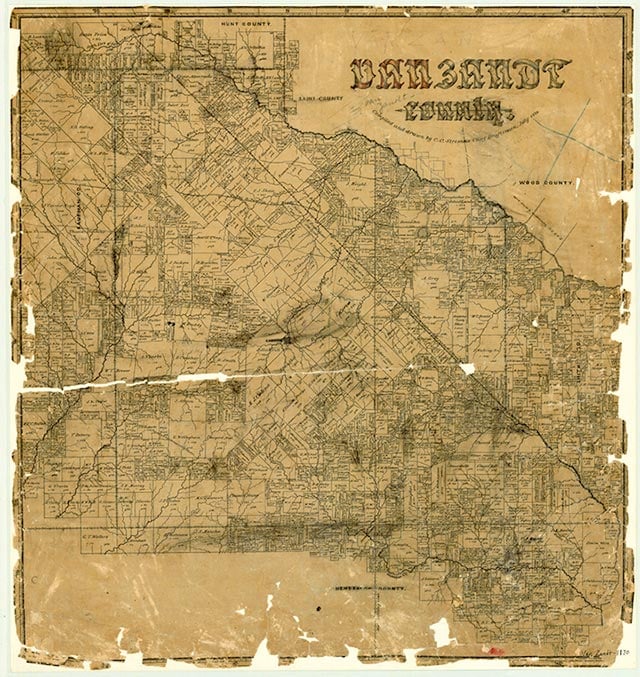Edgewood

Edgewood, on Farm roads 859 and 1504 and U.S. Highway 80 ten miles northwest of Canton in north central Van Zandt County, grew in three phases reflected in the community's three cemeteries. From 1840 to the 1870s settlers from eastern states founded a community two miles southeast of Edgewood close to the Dallas–Shreveport road and established the first cemetery. Barren Ridge, as this place was called, was the site of a post office opened in 1850. A second phase and second cemetery date roughly from 1870 to 1890. The Texas and Pacific Land Company began building a line between Marshall and Dallas in 1873, which led to the construction of sidings, switches, and a depot. In November 1875, District judge-elect John C. Robertson and his partner William S. Herndon sold one hundred acres of land west of the depot for $1,000 to the Texas and Pacific Land Company. By April 1874 a sectionhouse and a freight and passenger depot were built along a Stevenson siding. A town plat was filed on November 30, 1875, and a post office was established in 1877. A county-seat war between Canton and Wills Point led to a decision to establish a new shipping point at Edgewood. Herndon employed John P. Groome to lay track from Canton to the new depot, and a dirt road was authorized. The Methodist minister from Canton held a meeting for the railroad men at Edgewood, thus assembling the first church congregation in town. On April 19, 1879, the Texas and Pacific Land Company donated land for a church that was built that year. By 1881 the Baxter House Hotel and a blacksmith shop were in operation in Edgewood, and the community was a stop on the Texas and Pacific. A third phase of development, reflected in Oak Hill Cemetery, is associated with the arrival of settlers from Mississippi and Alabama in 1890 and the start of many new businesses. Shortly after 1893 the original church was torn down and a second church was constructed east of Oak Hill Cemetery. A third, built in 1896, was sold to a Black congregation. Northside Cemetery grew on land donated by John C. Robertson in 1896, but the deed was lost and burials declined. By 1890 Edgewood had a population of 650, a steam gristmill and gin, a church, a school, two general stores, and a hotel. Edgewood incorporated in 1913 and the population reached 500 the following year. The town had two banks, two cotton gins, a newspaper, a lumberyard, and an express office by 1919. During the 1920s the city expanded to include a canning plant, broom factory, and basket factory. In 1929 the population was 1,000; in 1931 it was 76l. Following the Great Depression the city became known as the “Tomato Capital of East Texas,” and began an annual tomato festival. The discovery of the Northeast Gas Field in 1960 revitalized the economy and led to business and population growth. In 1976 the Edgewood Historical Society began operating the Edgewood Heritage Park Museum, which includes twenty-one restored structures, to collect, preserve, and teach the rural culture of East Texas. In 1988 Edgewood had twenty-two businesses. The population increased from 1,284 in 1990 to 1,348 in 2000. By 2014 the population reached 1,473, and the community included forty-nine businesses and seven churches.
Diana J. Kleiner | © TSHA

Adapted from the official Handbook of Texas, a state encyclopedia developed by Texas State Historical Association (TSHA). It is an authoritative source of trusted historical records.

- ✅ Adoption Status:
- This place is available for adoption! Available for adoption!
- Adopted by:
- Your name goes here
- Dedication Message:
- Your message goes here
Belongs to
Edgewood is part of or belongs to the following places:
Currently Exists
Yes
Place type
Edgewood is classified as a Town
Associated Names
- (Barren Ridge)
- (Stevenson)
Location
Latitude: 32.69457020Longitude: -95.88325700
Has Post Office
Yes
Is Incorporated
Yes
Population Count, 2021 View more »
1,592
